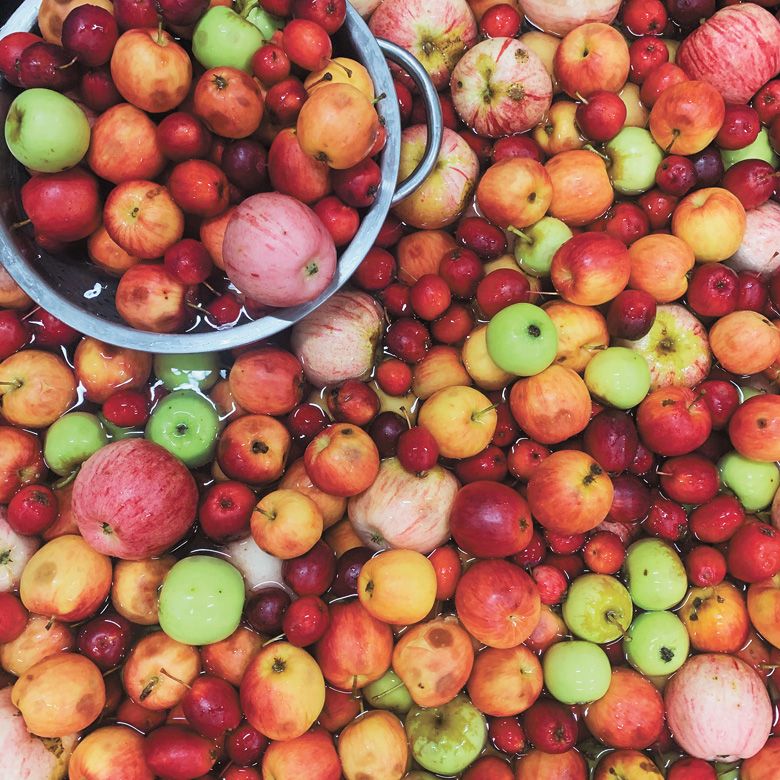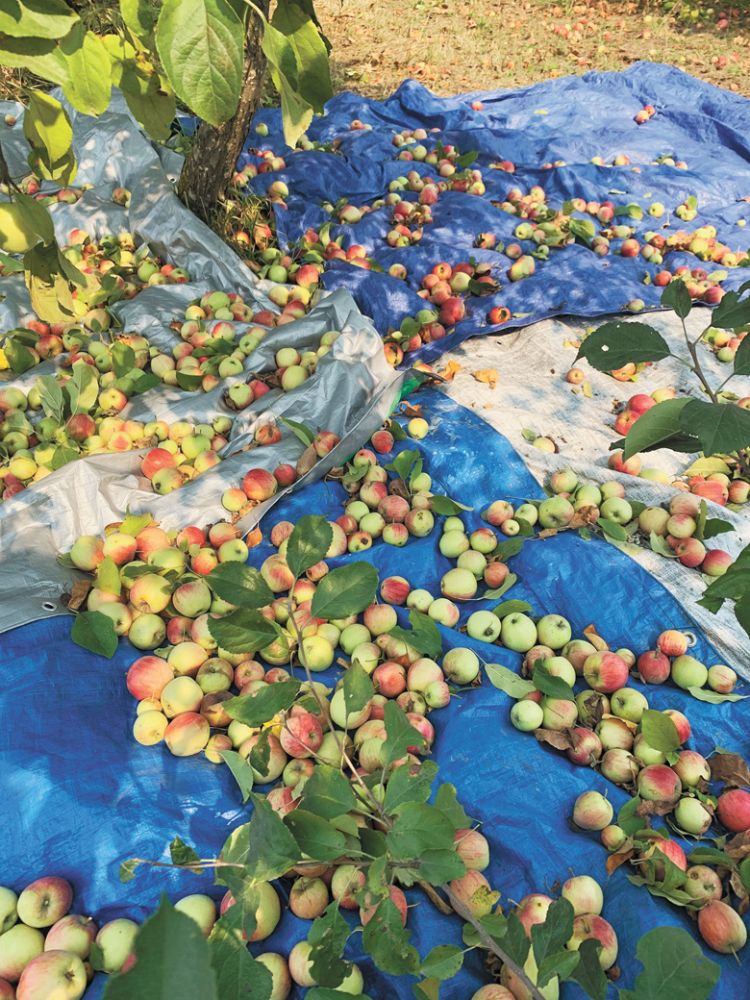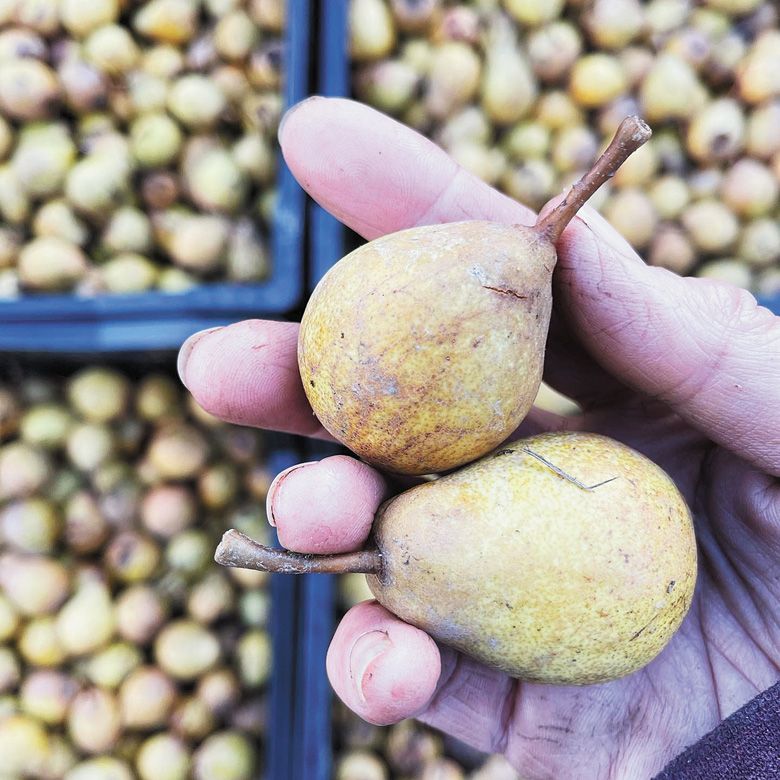Getting to the Core of Cider
Consider it wine's kissing cousin



By Tamara Turner
Cider is far more than just a sweet boozy apple juice. Yet, with the rise of both natural wines and experimental winemakers co-fermenting with other types of fruit, it’s increasingly difficult to draw a distinct line between the two. Consider them more like kissing cousins. The U.S. government categorizes cider as wine; so technically, we could refer to cider as “apple wine.” Here in Oregon, more winemakers are adding artisanal ciders to their repertoire.
If you belong to the “never cider” camp, perhaps it’s time to reassess your opinion. With a dizzying array of ciders being produced these days, there’s something for everyone. You’ll find these styles: modern, heritage, specialty, English, French and New England, farmhouse, sweet, dry, medium-dry, barrel-aged and those made with other fruit. In fact, the plethora of choices may seem overwhelming. Consider this an exciting time to be a cider (or apple wine) drinker.
Talk About Tannins
We often associate tannins with wine, but cider has them too. Traditional cider apple varieties are grouped into four categories: sweets, bittersweets, sharps and bittersharps. The term “bitter” indicates increased tannins in the skins and juice. These apples, often smaller with higher skin-to-pulp ratios, provide more tannins. “Sweets are high in sugar, but low in acid and tannin, bittersweets are low in acid but high in sugar and tannin, sharps are high in acidity but low in tannin and usually low in sugar, and bittersharps are high in acid and tannin but low in sugar,” describes David Patte, owner and winemaker at Sun Break Wine and Cider. “Bittersharps and bittersweets tend to make the best single-varietal heritage ciders. Common dessert apples are often too low in sugar, acid and tannin to produce great, stand-alone ciders. This is the reason for added flavor in ciders that use dessert apple juice.”
Each year, the growing season changes fruit chemistry, affecting sugars, acids, phenolics, and tannins. “Studies on grapes have proven that in hot, dry years, phenolic and tannin loads are higher, which is the same with all fruit,” says Kim Hamblin, co-owner of Art+Science, a cider and wine producer. In drier years, expect higher brix, lower acids and more tannins; the opposite in cooler years. “In 2023, we bought dry-farmed organic pears from Hood River that were much more tannic than the previous year’s pears; it was really interesting,” states Hamblin. Pears naturally contain more tannins than apples, contributing to their lush mouthfeel.
Vintage Matters
Cider vintages remain consistent in the same manner as wine. Weather patterns, particularly around budbreak, have a tremendous impact on the fruit. Some years deliver bumper crops; others might be sparse. “It’s a shame cider regulations don’t allow vintages on our labels,” says Jason Raymond Werner, owner, cidermaker and winemaker at Archetype12. “Like grapes, apples are a seasonal crop.” All Archetype12 ciders are vintage specific. “We work with what each tree gives us each vintage, blending or flavoring if we need to,” says Werner
“Artisanal producers of both will better reflect vintages; bigger companies become more like manufacturers using chemistry to achieve consistency. Smaller companies with low intervention show more vintage variations,” says Hamblin.
Kate Norris, co-winemaker and co-owner of Division Winemaking Company, produces a Perry (made with pears instead of apples) and plans to continue reflecting the vintage. “Using our unique method of co-fermenting pears with white grape skins and stems means I can never recreate the moment from one year to the next. The pears might ripen at a different time than the grapes, forcing me to change things up,” explains Norris. The first year she made Perry, she pressed the pears on the skins and stems of Chenin Blanc, Roussanne and Riesling, because those grapes happened to be ready at the same time. The second year, she used Aligoté. This year, expect something entirely different.
Similar Yet Distinct
In many ways, crafting cider is similar to wine production. With both, juice is extracted from ripe fruit and fermented. However, “All ciders are not created equal. There are mass-produced ciders, just as there are mass-produced wines,” says Hamblin. Art+Science practices natural winemaking principles: nothing added or removed. “Our cidermaking is nearly identical to how we craft wine,” explains Hamblin.
The major difference? Apples can be cold stored, concentrating the flavors, whereas grapes must be processed immediately after picking. Apples also must be milled (ground into a pulp) before they can be pressed. Grapes can be fermented or pressed whole. Hamblin and her partner Dan Rinke never add yeast, enzymes or nutrients. Like their wines, “Everything we make is native yeast-fermented with minimal-to-no-intervention,” says Hamblin. “We might add a minimal bit of sulfur but only if it needs stabilization.
Like wine, in order to achieve bubbles, cider producers typically use either the Méthode champenoise (secondary fermentation in the bottle) or the Charmat method (force-carbonation using CO2 gas in a steel tank).
“We make sparkling cider using Méthode Champenoise, without disgorging, so the yeast lees settle to the bottom of the bottle (or keg), imparting great flavor and texture,” says Patte. “A great cider can have beautiful apple, floral and sometimes butterscotch/caramel and spice aromatics and flavors, with textures similar to many sparkling wines.”
Werner employs a different approach. “Since our background is in wine, we honed a cider production process similar to red wine,” he says. “Where many cider producers merely ferment pressed apple juice, we allow extended-maceration and skin-contact throughout primary fermentation.” Werner sweats the apples as long as possible in order to concentrate the sugars and acids. After crushing, he inoculates with his house white wine yeast and ferments on-skin, performing multiple daily punchdowns.
Archetype12’s cider style is a unique combination of both French farmhouse and Spanish sidra (cider). “We craft a much drier cider than many mainstream producers,” says Werner. “And we always joke that we’ll never add pineapple or guava to any of our ciders… but we did do a co-ferment incorporating Nordic bilberries this year.”
Some cideries produce limited-run ciders using fruit from their neighbors’ personal apple or pear trees. Archetype12 based their entire project on a crowd-sourced, urban-foraged, community-driven model. “We’ve been fortunate enough to work with many families each vintage. It’s a great way to keep homegrown fruit from going to waste along with sharing the local terroir and harvest,” says Werner. “Once we can or bottle the ciders, we deliver half of whatever we make back to those who grew it. They can then share it with their friends and family. It’s all about community.”
“The Division Winemaking Perry is actually a mix of pear and a small amount of wine from the grape skins used during pressing, making it even more distinctive than most,” says Norris. For her first vintage, she pressed the pears on the skin and stems of botrytis Chenin Blanc, Roussanne and Riesling grapes. This technique added depth and structure. She describes it as “Perry in the eyes of a winemaker.”
Norris began making Perry during the pandemic, following the 2020 fire season. Kirk Sutherland, a micro-producer who makes a cider co-ferment for his label Erde Wines, invited Norris to pick an orchard with him. “It seemed like a fun project, and I wanted to try something new.; That’s what we do at Division Winemaking,” says Norris. She quickly realized it was a steeper learning curve than anticipated. “When I got back to the cellar, I realized I didn’t know what I was doing. If I put the pears directly into the press, was I just going to get something the texture of baby food rather than juice?,” questioned Norris. “I called my friend Andy Garrison at Stone Barn Brandyworks and asked how to best extract juice from the pears without making mush. Pears require a textured filler during pressing to keep the fruit from turning to mush, since they break down so easily.” And so, Division’s grape pomace Perry method was born. “Those stems and skins worked great as a substitute filler.”
Next, Norris focuses on fermentation. “It’s a bit different from making wine; pears have different residual sugars,” Norris explains. But the process isn’t entirely dissimilar. “It’s still applied winemaking knowledge. I’m pressing it off, putting it into neutral barrels, allowing it to kick off fermentation, adding a bit of sulfur to control the tendency of brettanomyces, and aging it in bottle to cpature sparkling bubbles. Just like a wine Pét-Nat.”
“What’s really interesting, especially in years where grape crops are in danger (from weather or smoke), I found it’s good to have something different on the table,” says Norris. “It started as a project to mitigate the 2020 wildfire smoke but turned out to be something to keep in my back pocket for the future.”
Regarding the future of Oregon cider, Art+Science’s Hamblin envisions wineries’ growing interest in cider production. “When we first started making cider, there were very few wine producers interested in making cider. Now you see not only breweries but winemakers getting into cider. Having more artisanal winemakers producing cider will certainly help elevate cider as a category in Oregon.”








